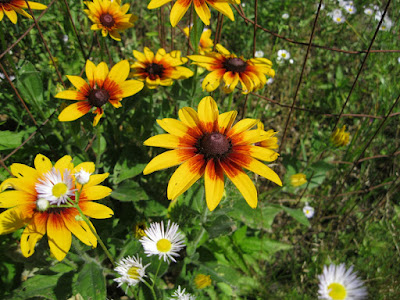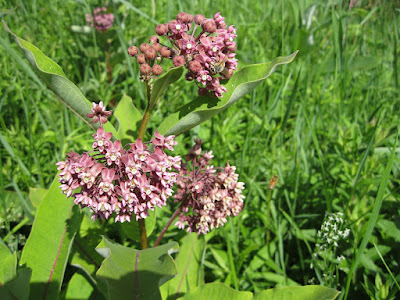Cardinal Flower is a native plant that presents many problems here right from the start. Neither classification perennial or biennial accurately describes its growth habit. As Fall approaches the entire plant that flowered dies to the ground. Around its base up to six new plants begin to grow establishing a low rosette of new leaves that will continue to function under snow. If the next season appears in an orderly fashion, each new plant will send up a single stalk that will display intense red flowers.
Our weather at this critical time in the growth cycle frequently kills the tender new leaves. This plant flourishes to our north where winter is colder than here. It is the change in daily temperatures that keep this plant rare in the Southern Tier of NYS. We experience widely changing daily temperatures when early southern air sweeps in. That night lows drop into the teens and the plant leaves darken and die. In the Adirondacks to our north, the high temperatures are simply missing. This plant can handle cold but not huge differences in daily temperature. Roxbury native John Burroughs suggested Monarda as a native plant that could bring intense red colored flowers to our gardens. Not one to quit easily, I persist in trying to establish surviving patches of Cardinal Flower. The plants in the first picture did survive but their growth is severely stunted. Normally, these soon to flower stems would be waist high. These survivors are a welcome sight as many of our plants did not survive at all.

This photo was chosen since it clearly shows the structure of an individual flower. Disregard the lowest flower in the center. Directly above it, three downward pointing red flower petals that might be seen as resembling a bird's tail make a dominate appearance. At the location where these three petals join, two upward pointing red petals can be seen. They could be seen as a bird's wings. Directly above all of that is a white colored blob at the end of what looks like a tube or a bird's head. It contains all of the parts necessary to produce seed.
Various reproductive parts can be seen here but the bright red of the petals will catch and hold the eye. This photo is included here just because of its beauty.
This picture shows many reproductive parts in various stages of activity. All of this happens rather quickly but I have not yet been able to maintain focus on one spot long enough to see any actual movement. That intense red color simply draws my focus to petals where nothing is happening. The white ring quickly is covered with yellow pollen. At the left side of the picture, a powerful imagination will suggest the location of yellow pollen. A moist suggestively shaped organ pushes past the pollen coated ring. That pollen is captured and rapidly sent back inside of the tube on its journey to the base of the flower where seed will develop. I need to catch my breath.
My earlier words did not mention new plants from seed. As is the case with many wildflowers, seed simply falls to the ground as the plants die down. This seed is quite picky about necessary conditions for germination. The ground must be both warm and wet for the seeds to grow. If all goes well, a low rosette of Fall appearing leaves will be seen. They are very similar in appearance to the new growth that springs from the base of the now dead plant.
This Spring was deadly for many plants. Those that survived are unusually small. We did intervene spreading freshly cut dead Chrysanthemum stems over these pictured survivors. That supply was limited with nearby neighbors only thinly covered. Many of them are dead. This Summer has been hot and dry. We have yet to see a new plant from seed. These brilliantly colored flowers are once again with us. Their next brush with possible extinction will be faced on the other side of Winter.



















































